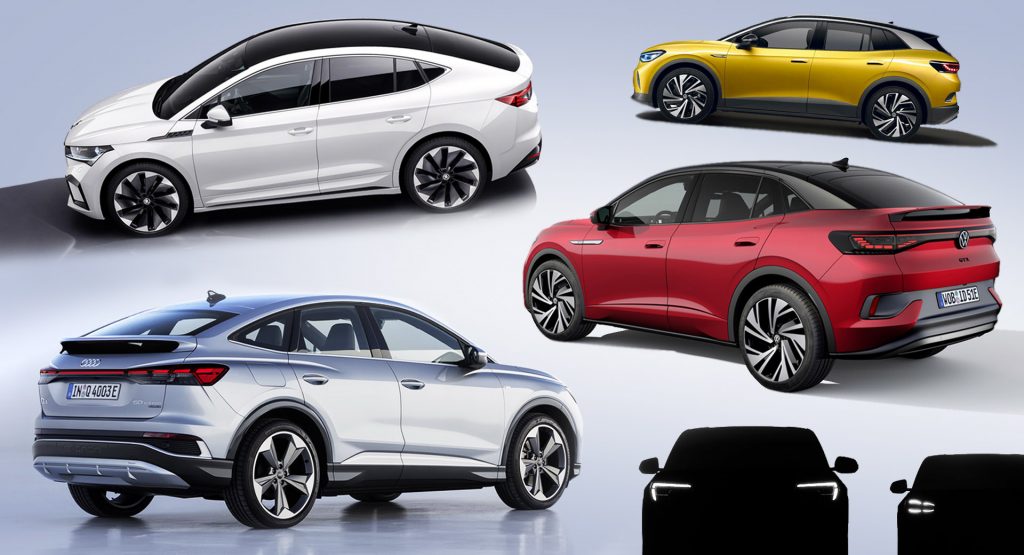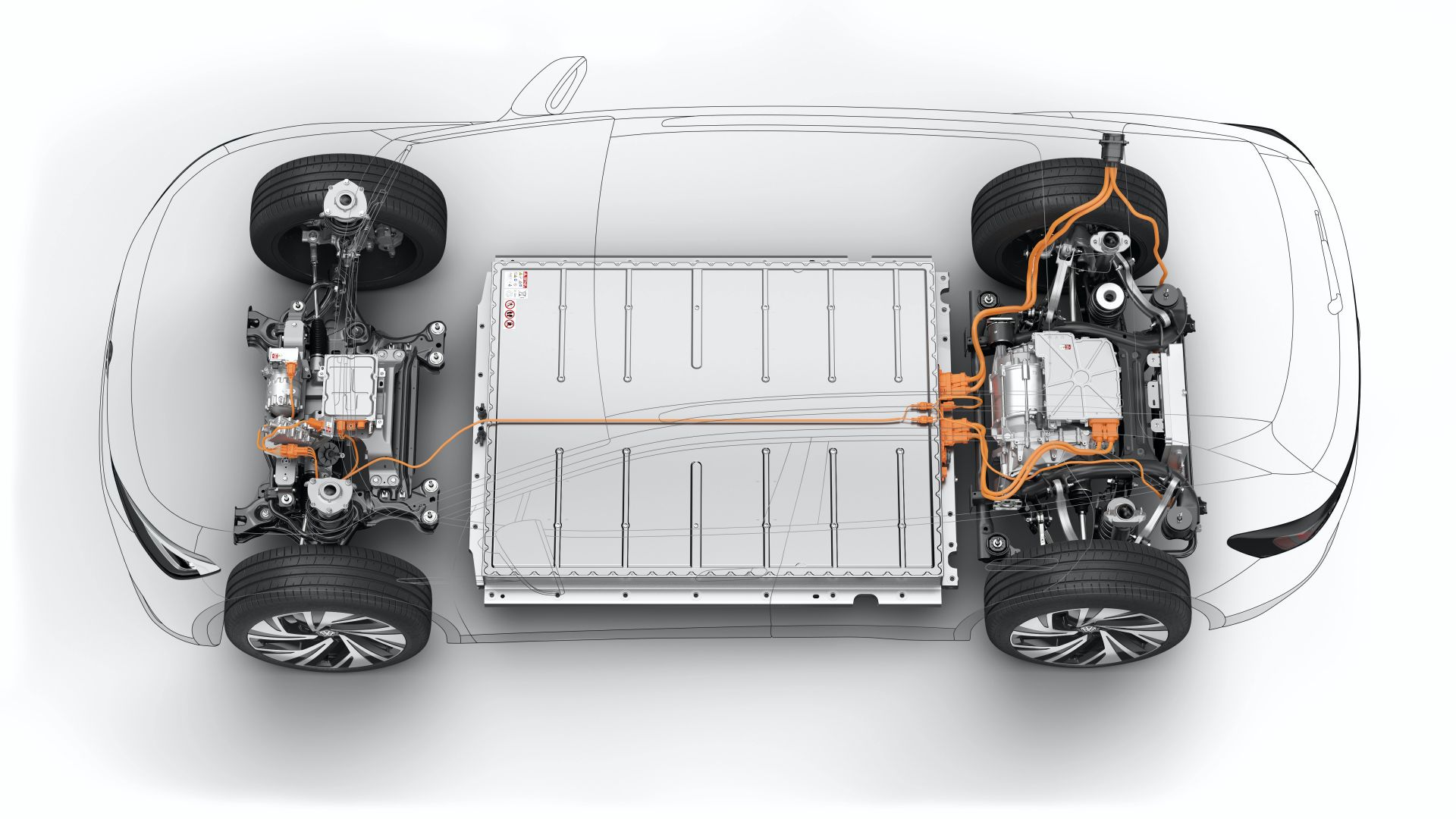Ford confirmed that it will be using VW Group’s MEB platform for two new crossovers which prompted us to count all the other models using the same architecture. The result is 12 vehicles if we include only the crossovers and their coupe-style derivatives.
Ford is the only automaker outside the VW Group that has officially confirmed it will be using the MEB platform in two of its future models. While the press release was coy on details, Ford confirmed the MEB-based “medium-size crossover” will be a five-seater and have a driving range of up to 500 km (311 miles) which is similar to what you get from the MEB-based VW, Skoda, and Audi electric models already available in the market. Ford’s announcement talked about a second MEB-based model which will most likely be the “sporty crossover” hinted at in the earlier teaser.
See Also: Ford EV Based On VW’s MEB Platform Spied, Will Be A Boxy Compact SUV
The MEB platform debuted in the VW ID.3 electric compact hatchback in 2019, but the first crossover to get it was the VW ID.4 in 2020, followed by the VW ID.5 sibling in 2021 with a sloping roofline. Volkswagen is also offering a slightly different ID.4 X in China alongside the regular ID.4 Crozz. Chinese buyers also have exclusive access to the ID.6 Crozz and ID.6 X with a larger footprint resulting in more space for the passengers.
The same architecture with slightly increased length can be found in the Skoda Enyaq iV since 2020, and in the recently revealed Enyaq Coupe iV which are the first fully electric crossovers from the Czech brand.

The regular Skoda Enyaq iV (above) compared to the Skoda Enyaq Coupe iV (below) with the aerodynamic roofline
The Spanish member of VW Group, Cupra, is also going to unveil its own version in 2024, called the Tavascan. Judging from the concept car, the production Tavascan might be the sportiest of the bunch, at least in terms of exterior design. Our spy photographers have caught a Tavascan mule during testing, using a VW ID.4 body.
Although nothing has been confirmed yet, we wouldn’t rule out a similar model from SEAT in the future, since the electrification of its range in Europe will make it inevitable at some point. Theoretically, a SEAT-branded MEB-based crossover would make a great EV successor for the ICE-powered Ateca in long term.

The Audi Q4 e-tron Sportback (left) and the Q4 e-tron (right) are the most premium MEB-based crossovers to date
The Audi Q4 e-tron and Q4 e-tron Sportback represent the more premium corner of the MEB model family, featuring upmarket styling and better-appointed interiors. Despite the flashy cover, the Q4s are offering similar powertrain and battery options with the higher-spec versions of their siblings. In China, there is also the Q5 e-tron which is like the Q4 e-tron’s larger brother.
Independently of their badge, the MEB-based crossovers are available with a 58 kWh or a 77 kWh battery offering a WLTP range of up to 531 km (330 miles), and single or dual motor powertrains with power outputs of up to 295 hp (220 kW / 299 PS) and 460 Nm (339 lb-ft) of torque.
This is not the first time we see sibling models from multiple automakers with such an extent of the common mechanical parts (MQB anyone?), but it is definitely a trend that will grow in the electric era due to the increased modularity of EV-dedicated architectures. We hope that designers and chassis tuning engineers will do their magic, bringing some kind of differentiation in the vast groups of mechanically-related models.






